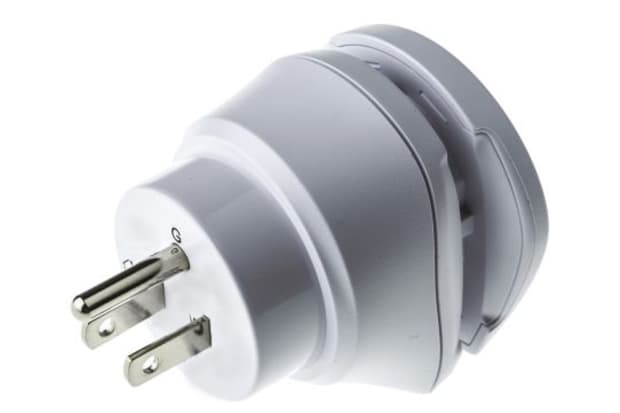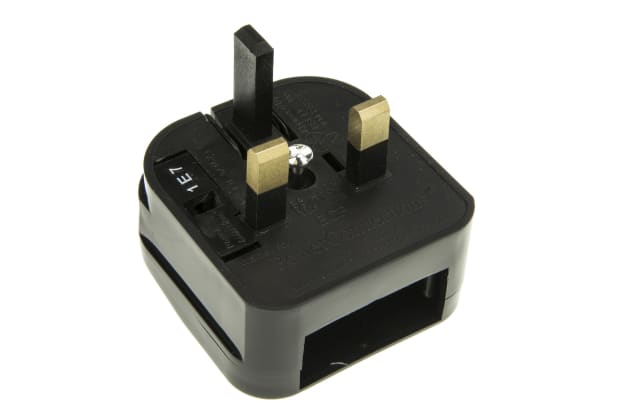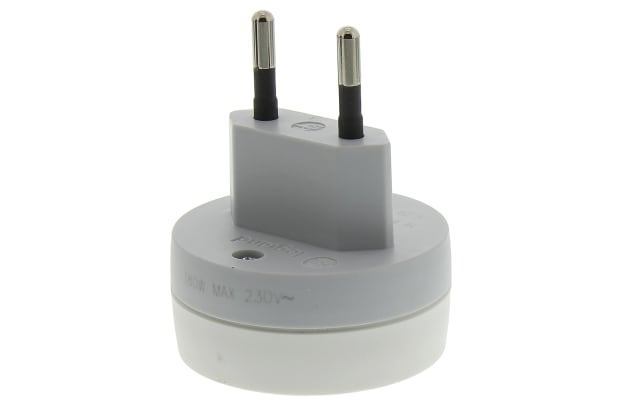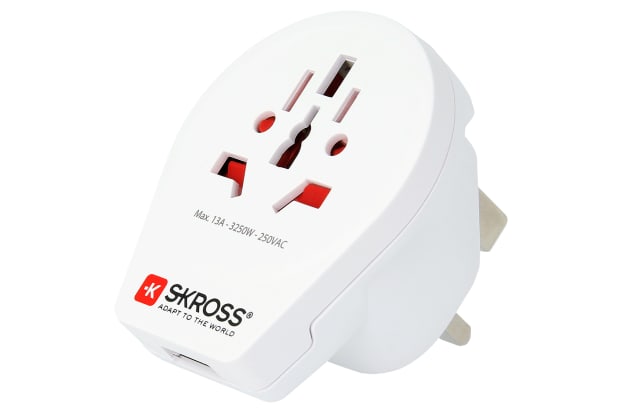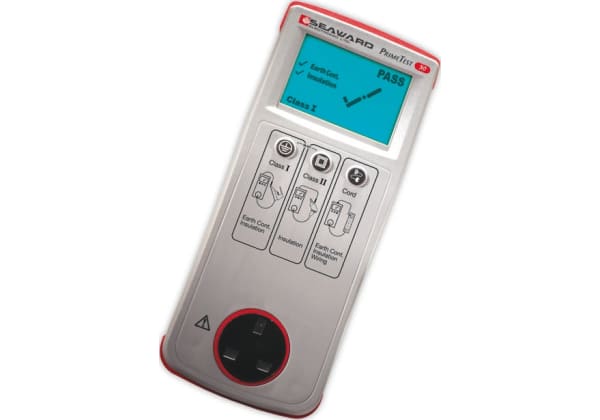- Published 24 Jan 2023
- Last Modified 25 Nov 2025
- 8 min
Complete Guide to Travel Plug Adapters
Picking the right travel plug adapter needn't be complicated - our guide is here to help identify the correct type.

Why are there So Many Different Plug Types?
In addition to the varying socket standards found around the world, different technology and electronics require varied equipment. This can result in a lot of variables and there is no single one size fits all approach.
There are many different plug types for multiple reasons, but it is primarily due to the varying speeds with which different nations first set up their own domestic power grids.
Why are there So Many Different Socket Types Today?
When mains electricity first started to be wired into domestic properties, it was largely used solely for lighting. However, as the use of electrical devices and appliances began to spread, power for lights was often cheaper than power for appliances, so many lower-wattage devices were adapted for use in light fixtures. Further rapid growth in the popularity of electrical appliances then meant that many more devices began to feature dedicated mains plugs and sockets.
The US initially led the way in standardising pin-based appliance plugs for wall sockets, quickly followed by Europe and Asia. However, most countries rejected the early North American standard of 60Hz, 110V power and their corresponding, less secure two-pin plugs.
Instead, alternative designs were used which often included higher voltages for more efficient power transmission and plugs with ground pins attached. For instance, the UK eventually settled on three-pin plugs featuring a built-in safety fuse.
Various plans to introduce a universal system have since been considered but there are currently no plans to move towards a single international standard. This leaves us where we are today, with a wide array of international plugs with usage varying by country.
Travel Plug Types
There are currently 15 different socket types found around the world, 12 of which are considered to be common types.
A handy first step in buying the right adapter for various plug types is learning to recognise the most widely-used types. The following reference diagram should help.
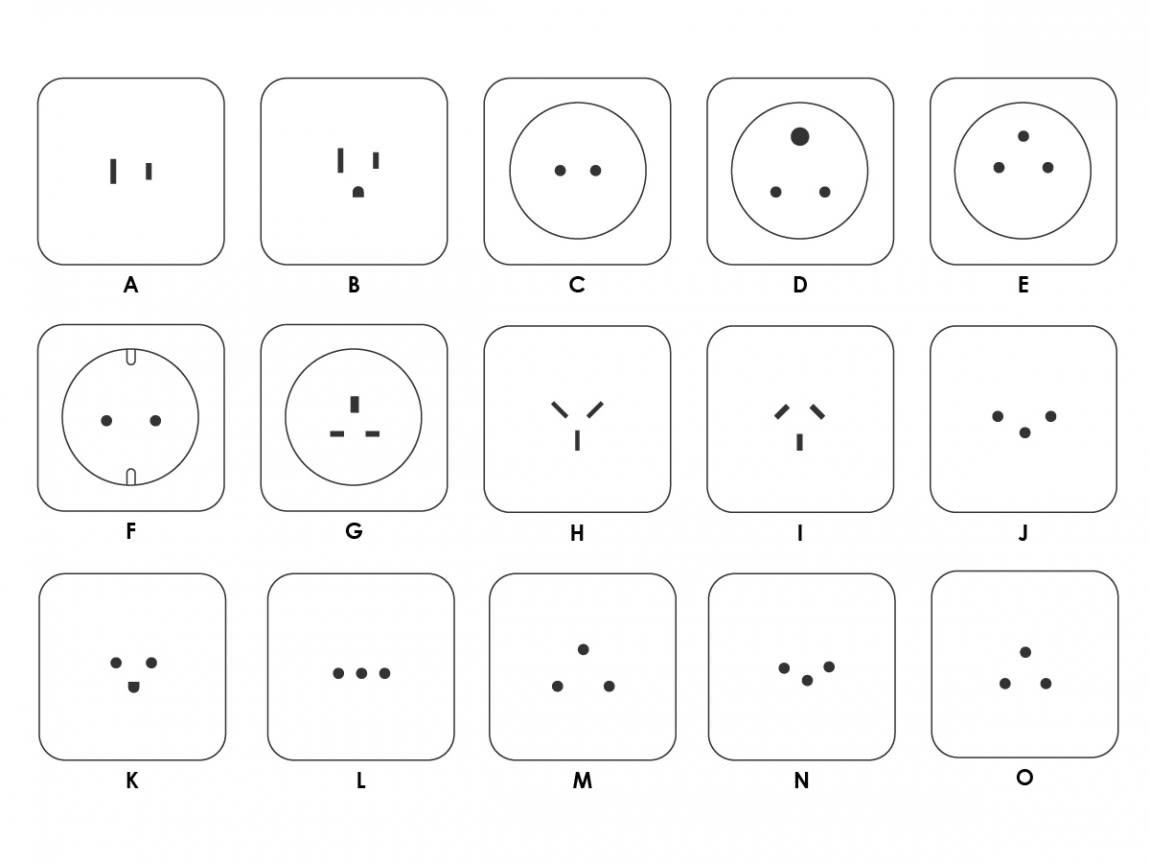
Once you know which type of plugs are used in particular regions, you can then start to narrow down your options. Depending on your specific requirements, you can opt for a single-region travel adapter, a multi-region plug, or a universal model.
Single-Region Travel Adapters
Single-region travel adapters are the most straightforward option. As well as particular countries, these models can also be used in countries which all use the same sockets and voltages. However, although these models are usually the cheapest option, it is also worth bearing in mind that choosing a single-region travel adapter may limit future flexibility.
Variations on single-region travel adapters include multi-way models (featuring the ability to plug in multiple devices simultaneously) and the option to pair a one-way single-region adapter with a multi-socket extension lead for multiple devices or increased demand.
Multi-Region Travel Adapters
For greater versatility, you can instead opt for a multi-country or region plug adapter. These are typically slightly larger or more complex units, with different pins for different sockets. Essentially, they are designed to accommodate several national standards of plug and socket arrangements simultaneously.
The most common types of multi-region travel adapters tend to handle a combination of European, Asian, UK, and North American standards. Once again, multi-region versions can be single-way or multi-way to suit your requirements.
Universal Travel Adapters
Universal travel adapters are generally the most flexible option as they are suitable for use in the majority of countries around the world. However, it is worth noting that this flexibility comes with increased size, especially compared to the smaller single or multi-region models.
The added functionality offered by the best universal travel adapter can be a real bonus, but their size can make them less convenient and tricky to transport. It’s also worth noting that in less stable socket types (such as the US two-pin), this added weight can make them feel less securely attached in the socket. Additionally, the larger the universal travel adapter, the greater chance that it may block neighbouring sockets or not fit certain layouts.
International Plug Sockets and Voltages
No matter which type of travel adapter you choose, it is important to remember that these devices only convert the pin layout on a device’s plug to work with certain types of wall sockets. In most cases, they do not convert voltages or currents.
That being said, it is still crucial to be aware of this, particularly in countries where the supply from the wall is not rated the same as your home country. In the UK, Europe, and Asia Pacific regions, many nations tend to use either 230V or 240V mains power as standard. As a result, devices and appliances in these countries are designed to handle higher power draw. Conversely, in regions using 110V or 120V power, such as North America and Taiwan, electronics designed for 240V may not work as well so it is important to plan accordingly. It is also worth bearing in mind that devices rated for 110V or 120V could potentially suffer damage if supplied with much higher mains voltages.
While many modern travel plug adapters can handle a full range of voltages from 100V to 240V, it is recommended to always double-check compatibility beforehand. Verify that both the adapter and the device being used are suitable before you plug anything in.
Below, you will find a handy table detailing the voltages that each country uses as standard:
Country | Adapter Plug Type | Voltage |
|---|---|---|
| Nicaragua | A | 120V |
| Japan | A, B | 100V |
| Colombia, Haiti, Jamaica | A, B | 110V |
| Barbados, Trinidad and Tobago | A, B | 115V |
| Bahamas, Canada, Costa Rica, Dominican Republic, Ecuador, El Salvador, Guatemala, Honduras, Liberia, Marshall Islands, Micronesia, Palau, Panama, USA, Venezuela | A, B | 120V |
| Mexico | A, B | 127V |
| Antigua and Barbuda | A, B | 230V |
| Philippines | A, B, C | 220V |
| Laos | A, B, C, E, F | 230V |
| Suriname | A, B, C, F | 127V, 230V |
| Cuba | A, B, C, L | 110V, 220V |
| Thailand | A, B, C, O | 230V |
| Guyana | A, B, D, G | 120V, 240V |
| Belize | A, B, G | 110V, 220V |
| St Vincent and Grenadines | A, B, G | 110V, 230V |
| Peru | A, C | 220V |
| Bolivia | A, C | 230V |
| Vietnam | A, C, D | 220V |
| Myanmar | A, C, D, G, I | 230V |
| Bangladesh | A, C, D, G, K | 220V |
| Cambodia | A, C, G | 230V |
| China | A, C, I | 220V |
| Yemen | A, D, G | 230V |
| Angola, Gabon, Guinea-Bissau, North Korea, Mauritania, Paraguay, Somalia, Togo | C | 220V |
| Pakistan, South Sudan, Sudan | C, D | 230V |
| DR Congo | C, D, E | 220V |
| Chad, Niger | C, D, E, F | 220V |
| Senegal | C, D, E, K | 230V |
| Jordan | C, D, F, G, J | 230V |
| Bhutan, Iraq, Lebanon, Zambia | C, D, G | 230V |
| Maldives | C, D, G, J, K, L | 230V |
| India, Nepal | C, D, M | 230V |
| South Africa | C, D, M, N | 230V |
| Benin, Burkina Faso, Burundi, Cameroon, Central African Republic, Comoros, Cote d'Ivoire, Djibouti, Equatorial Guinea, Madagascar, Mali, Morocco | C, E | 220V |
| Belgium, Congo, Czechia, France, Mongolia, Poland, Slovakia, Tunisia | C, E | 230V |
| Monaco | C, E, F | 230V |
| Denmark | C, E, F, K | 230V |
| Syria | C, E, L | 220V |
| Afghanistan, Azerbaijan, Belarus, Egypt, Ethiopia, Georgia, Kazakhstan, Kyrgyzstan, Russia, South Korea, Tajikistan, Turkmenistan, Uzbekistan | C, F | 220V |
| Albania, Algeria, Andorra, Armenia, Austria, Bosnia and Herzegovina, Bulgaria, Cape Verde, Croatia, Estonia, Finland, Germany, Greece, Hungary, Iceland, Indonesia, Iran, Latvia, Lithuania, Luxembourg, Moldova, Montenegro, Netherlands, Norway, Portugal, Romania, Sao Tome and Principe, Serbia, Slovenia, Spain, Sweden, Turkey, Ukraine | C, F | 230V |
| Guinea | C, F, K | 220V |
| Uruguay | C, F, L | 220V |
| Italy, San Marino | C, F, L | 230V |
| Mozambique | C, F, M | 220V |
| Mauritius | C, G | 230V |
| Israel, Palestine | C, H | 230V |
| Argentina | C, I | 220V |
| Liechtenstein, Rwanda, Switzerland | C, J | 230V |
| Chile | C, L | 220V |
| Eritrea, Libya | C, L | 230V |
| Brazil | C, N | 127V, 220V |
| Botswana, Dominica, Ghana, Nigeria, Saint Kitts and Nevis, Sierra Leone, Sri Lanka, Tanzania | D, G | 230V |
| Zimbabwe | D, G | 240V |
| Namibia | D, M | 220V |
| Bahrain, Cyprus, Gambia, Grenada, Ireland, Malawi, Malta, Saint Lucia, Saudi Arabia, Singapore, UAE, UK | G | 230V |
| Brunei, Kenya, Kuwait, Malaysia, Oman, Qatar, Seychelles, Uganda | G | 240V |
| Solomon Islands | G, I | 230V |
| Australia, New Zealand, Samoa, Tuvalu, Vanuatu | I | 230V |
| Fiji, Kiribati, Nauru, Papua New Guinea, Tonga | I | 240V |
| Lesotho | M | 220V |
| Eswatini | M | 230V |
100V, 110V, 115V, 120V and 127V Sockets
100V-127V outlets are used in many locations across the world, as you can see from the handy table above. Countries using these sockets include the USA and Canada.
There are both advantages and disadvantages to lower voltages from the mains. Advantages include:
- Generally safer and lower risk of electrocution
- Significantly lower insulation requirements than higher voltages
- Smaller and cheaper connectors and switches required due to lower voltages
Disadvantages include:
- Larger appliance cabling tends to be thick and heavy due to the additional copper insulation required for higher current needed to deliver power at lower voltages
- Lower voltages from 110V sockets could result in certain types of higher-draw electronics operating/charging less efficiently
220V, 230V and 240V Sockets
220V-240V outlets are typically standard in the UK, Europe and the majority of Asia and the Asia Pacific. The advantages of this higher voltage supply include:
- 220V-240V supplies are often said to be cleaner and more efficient, as they can transmit power at a reduced overall cost due to the lower current required
- Less insulation is needed so cables can be smaller and cheaper
- Less energy as heat is lost along the route to the device or appliance
- Higher voltages are more convenient for high power draw applications and larger lighting arrays, as higher voltage means that more wattage can be pushed through at fewer amps
Disadvantages include:
- Higher voltages have the potential to cause electrocution more easily so additional care in both design and use must be taken
- 220V-240V connectors and switches tend to be larger and bulkier, yet also more robust
FAQs
If you are travelling overseas and need to use or charge electronics or devices brought with you, a travel adapter or converter will usually be required. As there are so many different standards used around the world, portable socket converters are highly beneficial. Many options are available, including simple one-region adapters, multi-way converters, and more complex universal Wi-Fi-enabled sockets.
The vast majority of travel adapters do not change voltage, although many models are designed to work with a wide range of voltage and current ratings. As noted above, it is vital to check both the adapter and the device you are using for compatibility with local voltages and current before use.
Handy additional features and benefits might include the following, depending on the model of plug adapter you choose:
- USB charging
- USB-C ports
- Wi-Fi functionality
- Quick charge capabilities
- USB-PD
- Multiple voltage ratings
In some locations, you may find that the voltage you need is not achievable with a particular adapter. Certain devices may be more at risk than others from incompatibility with local current ratings. If this is the case, you may be able to solve the problem with a voltage transformer or similar device.
Travel Adapter Brands
RS Pro
We stock a wide range of high-quality products from our in-house brand RS Pro. Browse the full range online.
PowerConnections
With a wide range of products available, travel adapters from PowerConnections are sure to meet your requirements.
Legrand
High-quality and durable, travel adapters from Legrand are available online with RS.
